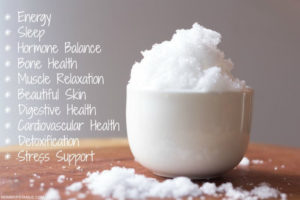When I put together a list of natural Easter egg dyes to attempt with my kids years back, hibiscus was stated to make a stunning pink. Nevertheless, when I in fact checked it the egg turned dark green. Oops. A Few Of the other recommendations didn’t operate at all, and some were simply meh. (I’m taking a look at you lemon peels.)
That’s why after try out whatever from carrots to raspberries and grape juice, I have actually put together a list of components that regularly yield stunning, lively colors. You’ll discover them listed below in addition to the particular dishes I utilized.
Likewise, when the hunt is over, you can utilize the eggs to make this homestyle potato salad recipe with bacon and egg.
However initially, you might be questioning …
Why not utilize food coloring?
When I was a kid, I clearly keep in mind consuming difficult boiled eggs that were blue, red, and yellow. The color tabs we ‘d utilized weren’t planned to soak through, however they did, which’s simply among the factors I select a natural method.
- As covered in this post, food dyes have actually been connected to attention and behavioral issues in kids, specific kinds of cancer, and other issues.
- The U.S. isn’t as rigid as Europe in controling food dyes. They need foods which include dyes to come with alerting labels and have actually prohibited much of the ones that are still in usage within the United States.
- Some kids are delicate to incredibly percentages of food color.
If you wish to take a deep dive into the health impacts of each private color, I advise the Center for Science in the general public Interest’s 68 page report, Food Dyes: A Rainbow of Risks.
How To Color Easter Eggs Naturally
Listed below you’ll discover my method for producing stunning, lively colors utilizing daily components. The guidelines are divided into 3 areas:
- Private dishes for various colors of color
- My 3 step-process for coloring Easter eggs, that includes how to make the color, how to prepare the eggs, and guidelines for utilizing the color
- Responses to often asked concerns
- Where to purchase natural Easter egg color if you do not wish to make your own
To Color Easter Eggs Pink, You’ll Require:
- 2 cups water
- 2 cups peeled, grated beets
- 1-2 tablespoons white vinegar
See the “Three-Step Process for Dyeing Easter Eggs Naturally” area listed below for particular guidelines on how to make the color, prepare the difficult boiled eggs, and after that color the eggs.
To Color Easter Eggs Orange, You’ll Require:
- 2 cups yellow onion skins
- Enough water to cover skins by 1 inch
- 1-2 tablespoons white vinegar
Scroll to the “Three-Step Process for Dyeing Easter Eggs Naturally” area listed below for comprehensive guidelines.
To Color Easter Eggs Yellow, You’ll Require:
- 2 cups water
- 1 tablespoon turmeric
- 2 tablespoons vinegar develops
This dish develops a lively yellow on white eggs and a deep gold on brown ones. The egg to the left of the one significant “turmeric” above is an example of what a brown egg appears like.
Other alternatives: Highly brewed chamomile tea develops a soft yellow.
See the “Three-Step Process for Dyeing Easter Eggs Naturally” area listed below for detailed guidelines.
To Color Easter Eggs Green or Blue, You’ll Require:
- 2 cups shredded purple cabbage
- Enough water to cover cabbage by 1 inch
- 1-2 tablespoons vinegar
Brown eggs will turn green and white eggs will turn blue.
Other alternatives: Highly brewed hibiscus tea (with one tablespoon vinegar per cup) will develop the dark green imagined in the image at the top. Blueberries will develop a somewhat marbled blue color.
Detailed guidelines can be discovered in the “Three-Step Process for Dyeing Easter Eggs Naturally” area listed below.
To Make Purple Easter Egg Dye, You’ll Require:
When utilizing kvass no extra color preparation is required, so in the guidelines listed below you can avoid the “Three-Step Process for Dyeing Easter Eggs Naturally” area and move directly to “Instructions for Boiling & & Coloring The Eggs”
My Three-Step Process for Dyeing Easter Eggs Naturally
In this three-step procedure you’ll make all the dyes initially, then boil and prepare the eggs, and lastly color the eggs.
You’ll require:
- Natural color products (shredded beets, turmeric, etc)
- Filtered water
- 1-2 tablespoons vinegar per dye color
- Pots for simmering components and boiling eggs
- Fit together strainer
- Little bowls or mason containers (order mason jars here)
- Eggs
- Coconut or olive oil (optional– for including appeal to eggs)
Action 1: Making Natural Easter Egg Dye:
- Bring the color matter (cabbage, turmeric, and so on) and water to a boil. Turn heat to low and simmer, covered, for 15-60 minutes till preferred color is reached. Bear in mind that the eggs will be a number of tones lighter so it’s finest to opt for deep, abundant shades.
- Eliminate the egg color from heat and let it cool to space temperature level.
- Pour the color through a mesh strainer into bowls/mason containers and include 1 tablespoon of vinegar for each cup of color liquid.
- Include difficult boiled eggs to the color and position it in refrigerator till the preferred color is reached. I began mine in the early afternoon and let them instill over night.
Action 2: Instructions for Boiling & & Coloring The Eggs:
- Include the eggs to a medium pot and cover them with cold water. Bring the water to a difficult boil, then switch off the heat and cover the pot. After 10 minutes, position the eggs in a bowl of cold water and let them sit till they’re cool to the touch.
- Drain pipes the bowl and change with warm, soapy water– I utilize non-toxic castile soap. Carefully rub the eggs with a washcloth or your thumb to get rid of oils that forbid the natural dyes from sticking efficiently to the egg shell.
Action 3: Coloring The Eggs
- Lower the eggs into the color and position them in the refrigerator. Soak till your preferred color is reached. (We typically soak ours over night.)
- When the eggs are prepared scoop them out with a slotted spoon and position them on a drying rack or an upside down egg container.
- Naturally-dyed eggs have a matte surface. If you wish to include a little appeal, rub with a drop or more of coconut or olive oil.
Required a quicker and simpler alternative?
If you wish to make naturally-dyed eggs without investing additional time boiling fruits and veggies,this kit looks like a good option The dyes are made from fruits, herbs and veggies– all you require to include is warm water.
It might be an excellent concept to purchase quickly simply to ensure it shows up on time.
Regularly Asked Concerns
Below are the most typical concerns I have actually gotten given that very first publishing this tutorial. If you have one I have not addressed yet please let me understand!
Can the dyes be kept over night and utilized the next day?
Yep!
Can I make use of the eggs with a wax crayon prior to coloring them?
We have not attempted this however I do not see a factor not to as long as the crayons are non-toxic.
Do dyes alter the taste of the eggs?
Nope!
What do you consider coloring Easter eggs with silk?
Over the previous couple of number of I have actually gotten a couple of concerns about whether it’s safe to color eggs with guys’s silk ties. Although silk colored eggs are stunning and silk is absolutely natural, a few of the dyes utilized to color ties are poisonous. Scientific American recommends using a mask or operating in a well-ventilated location while making them, and recommends versus consuming them.














